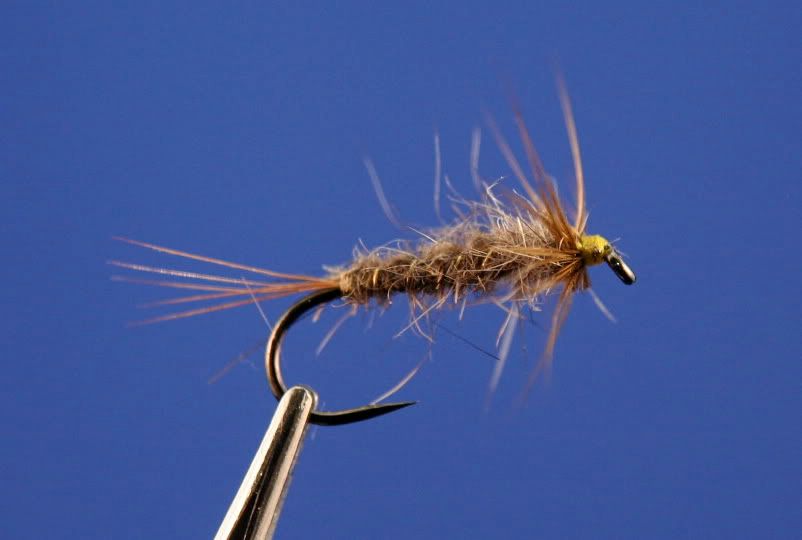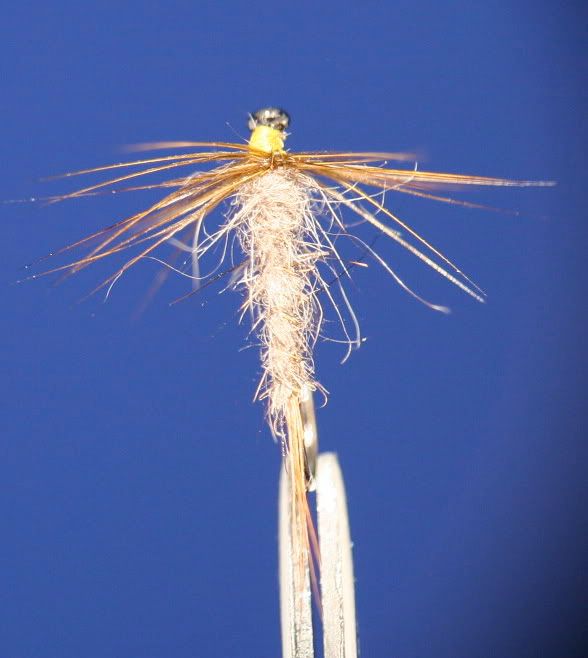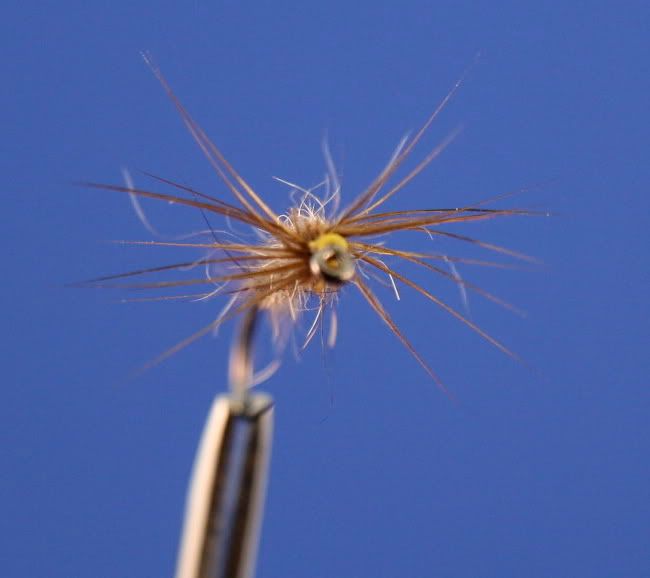New arrival takes off his/her hat, swipes it across the tops of the vegatition...
inspects the contents and sez ... about a size 14 or 16, medium brownish tan.
UNQUOTE
That works sometimes. The point being that there may well be lots of insects flying around, but what you want to use imitations of are those that the fish are actually taking. Also, you wont find many nymphs or scuds etc in the bushes!
You do need some basic knowledge of what you can expect and when you can expect it. A "hatch chart" for the water can be very useful indeed.
The main difficulty in all of this, ( apart from dressing good imitations in the first place!), is actually discovering what the fish are taking. This is less important when using various generic patterns as these will usually be good imitations of various things and will nearly always work more or less well depending on circumstances. When using specific patterns it is often essential to use the right one. It is also less important under various circumstances such as fairly "barren" waters where fish will often take more or less anything at any time, or on fertile waters when the fish are not concentrating on some particular hatch.
You need to consider all these factors when choosing flies. You should ALWAYS have a GOOD reason or reasons for using particular flies, not just use whatever is handy or because it worked last time you were out. You also need to learn when to persevere with a fly because you know it should work, and when to change when it is not working. Whether you know the latin names of various flies is largely irrelevant and only really of use when discussing this with others, or when trying to match various patterns etc. Random choice of flies will not be consistently successful. The more good reasons you have for choosing a particular fly the more likely you are to be successful.
TL
MC



